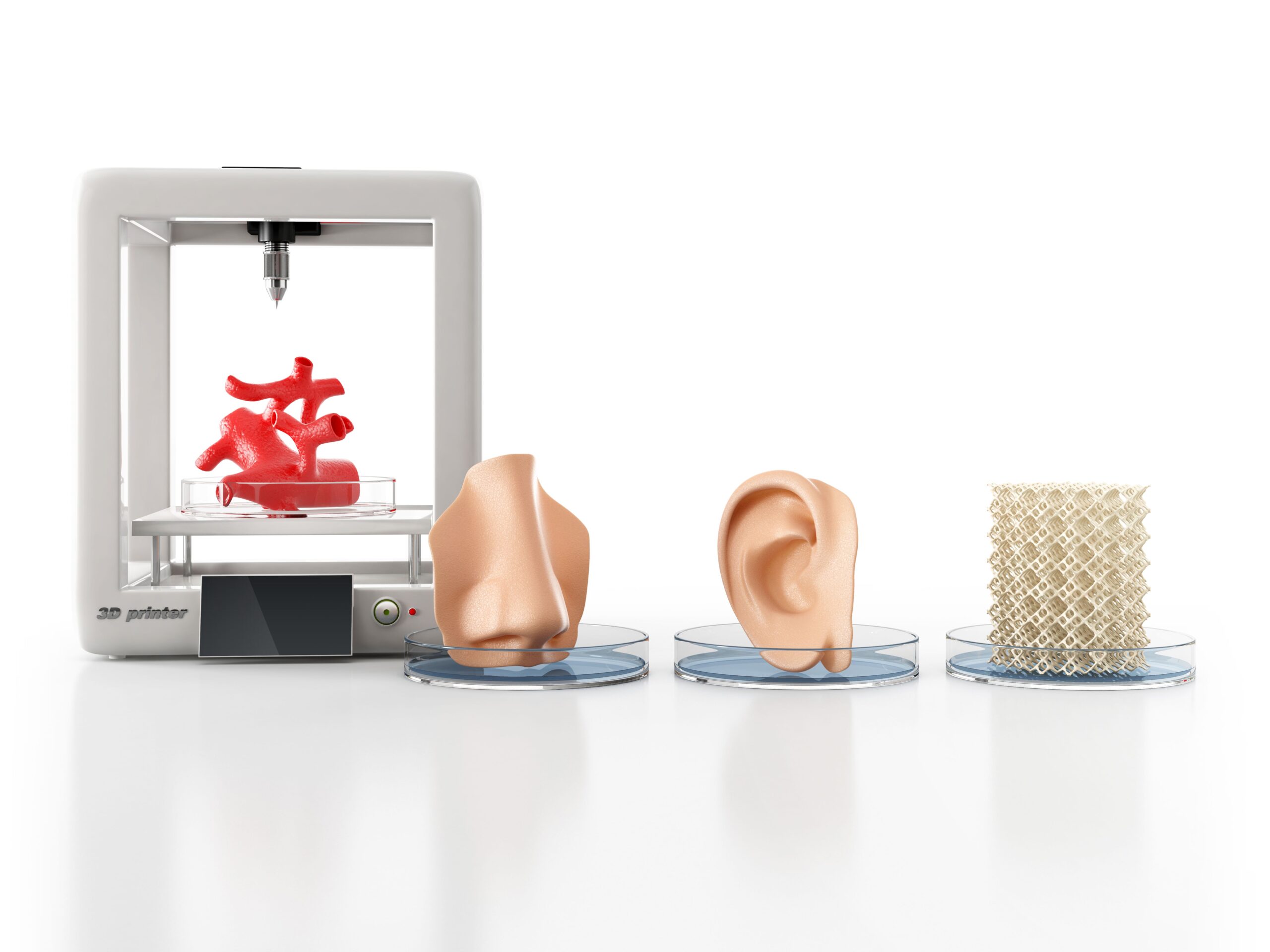
Human biomaterials for 3D printing of human tissue
Bio-fabrication or 3D bioprinting aims to produce tissue structures for numerous applications such as non-animal testing, drug screening and regenerative medicine. A crucial aspect of the technology is the use of suitable materials that enable 3D printing with living cells, known as biomaterials. These biomaterials must be tailored to the needs of cells and keep them alive during and after the printing process. Currently, most biomaterials are made from non-human materials (animal-based, e.g. collagen or gelatine). In contrast, the IraSME research project “Human bioinks for 3D printing (HU3DINKS)” aims to advance this field by developing human tissue-based materials for various 3D bioprinting technologies.
The materials most commonly used in 3D bioprinting, such as gelatine or collagen, still come from animal sources. Therefore, there is a huge need for animal-free alternatives, not only to replace animal testing, but also to better replicate the processes and conditions in human tissue. In this regard, synthetic polymers have also been explored, and although several of these materials can be safely used in the human body, these synthetic options are an oversimplification of the complex natural situation in vivo and cannot fully bridge the gap between current in vitro tests and animal models.
The HU3DINKS project aims to overcome these disadvantages by developing high-performance biomaterials based on human tissue. These biomaterials will be suitable for various 3D bioprinting technologies, including extrusion printing and high-resolution laser printing. Although there are already commercial human tissue-based materials on the market, their bioactivity and printing performance remain low. The HU3DINKS consortium therefore aims to convert commercially available human tissue materials into bio-materials that can be easily printed.
Author: SYNYO
Links
Ludwig Boltzmann Institut (2023), “Menschliche Biomaterialien für den 3D-Druck menschlichen Gewebes“, https://trauma.lbg.ac.at/news/menschliche-bio-materialien-fuer-den-3d-druck-menschlichen-gewebes/, (Accessed on 19.04.2024)
Keywords
Bio-fabrication, 3D bioprinting, Tissue structures, Non-animal testing